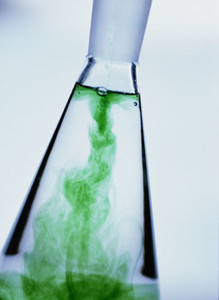Generics
For approval of small molecule generics, FDA requires that evidence of average bioequivalence in drug absorption in terms of pharmacokinetic (PK) parameters be provided through the conduct of bioequivalence studies. This may be done using the area under the blood and/or plasma concentration-time curve and peak concentration (Cmax) [1].
Quantitative evaluation of bioequivalence
Biosimilars/Research
|
Posted 02/12/2011
 0
Post your comment
0
Post your comment

In practice, it may be claimed that a generic drug is bioequivalent to an originator (reference) drug if the 90% confidence interval for the ratio of geometric means of the primary PK parameter is completely within the bioequivalence limits (80%, 125%).
This is most often achieved by using a crossover study design. This means that each subject receives first one drug, followed by a wash-out period and then the second drug. It is thus possible to estimate (approximate) the within-subject variance, which can then also be used to address drug switching and interchangeability.
Commonly employed statistical methods for the assessment of average bioequivalence are the confidence interval approach and the method of interval hypotheses testing.
Biosimilars
Testing the bioequivalence of biosimilars differs from that of standard generics. Bioequivalence testing procedures for biosimilars are to be performed against the originator product as a control (reference) and include preclinical and clinical testing [2].
In the Biologics Price Competition and Innovation (BPCI) Act, a biosimilar product is defined as a product that is ‘highly similar’ to the reference product, notwithstanding minor differences in clinically inactive components and there are no clinically meaningful differences in terms of safety, purity and potency. However, little or no discussion regarding how similar is considered ‘highly similar’ is given in the BPCI Act.
For biosimilars, most of which have long half-lives, crossover study would be ineffective and unethical. This is due to the fact that a crossover study requires a wash-out period (which would be long for biosimilars with long half-lives) where the patient is not allowed to take the drug and therefore will have no treatment for their condition. On the other hand, parallel-group studies are required, but these studies do not provide an estimate of within-subject variation. For a parallel-group study, each drug is administered to a different group of subjects. Thus, we can only estimate total variance (between and within-subject variances), not individual variance components. This makes an evaluation of interchangeability difficult.
Statistical tests that may be used to asses biosimilarity are Shuirmann’s two one-sided tests procedure or the confidence interval approach.
Related articles
Interchangeability (switching and alternating) of biosimilars
Development of biosimilars is not an easy matter
References
1. Chow SC. Quantitative evaluation of bioequivalence/biosimilarity. J Bioequiv Bioavailab. 2011; S1. doi:10.4172/jbb.S1-002
2. Krishnaiah YSR. Bioequivalence of follow-on biologics or biosimilars. J Bioequiv Bioavailab. 2009;1(2):i-ii. doi:10.4172/jbb.1000007e
News
FDA approves six denosumab biosimilars
EMA recommends approval for four biosimilars targeting three therapies
General
Samsung Bioepis wins Pyzchiva case; Regeneron patent rulings threaten foreign biosimilars
Chinese biosimilars go global: growth, partnerships, and challenges
What is the future for the US biosimilar interchangeability designation

Biosimilars/Research Posted 05/06/2025
Biosimilar clinical efficacy studies: are they still necessary?

Biosimilars/Research Posted 27/05/2025
The best selling biotechnology drugs of 2008: the next biosimilars targets








Post your comment